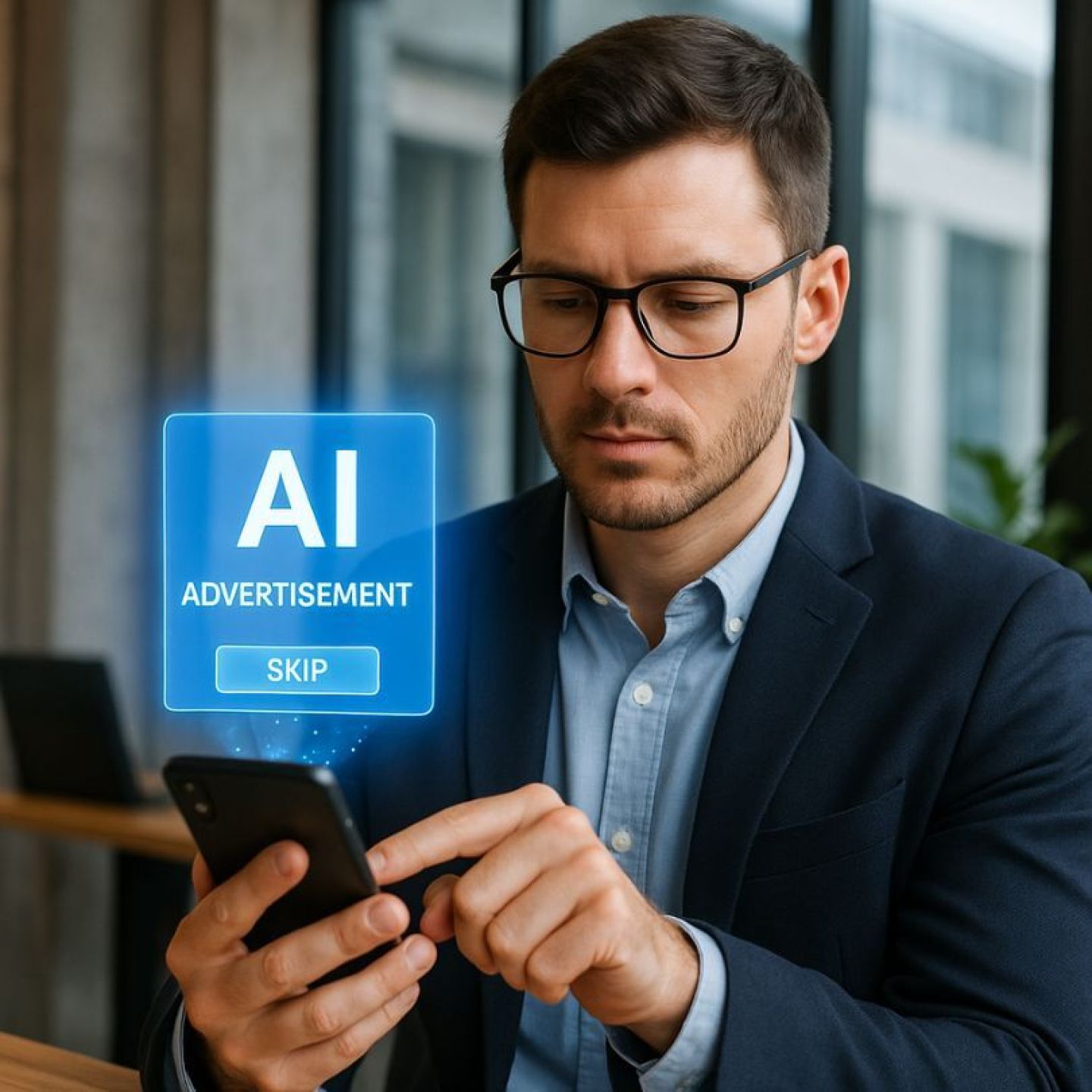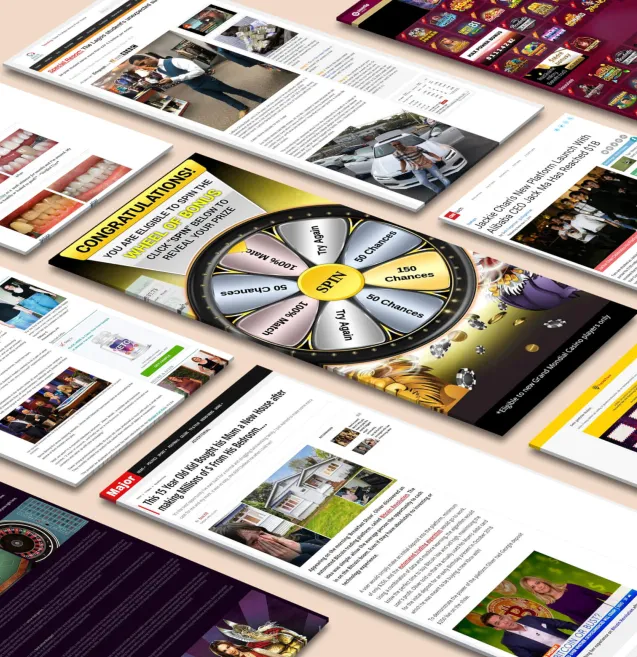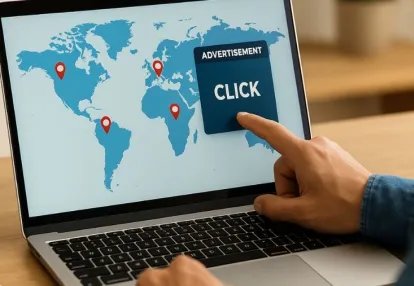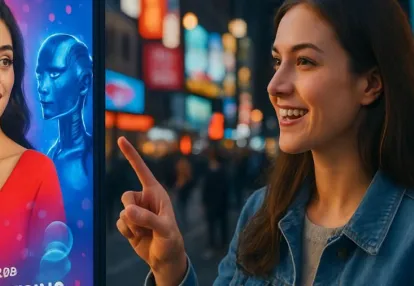
Our spy tools monitor millions of popup and pop-under from over 90+ countries and thousands of publishers.
Get StartedPop ad campaigns have become more advanced with the help of artificial intelligence (AI). AI can now analyze large amounts of data, predict how users will behave, and optimize ad delivery in real-time - things that were impossible just a few years ago.
AI has completely changed how marketers find and connect with their audiences. These smart systems can:
The impact of AI on targeting accuracy is impressive. In the past, pop ad campaigns relied on general demographic information, but now AI-powered solutions go deeper by looking at individual user preferences, browsing habits, and purchase history.
AI's impact on pop ad campaigns goes beyond just improving targeting. These systems can now:
The advertising industry has undergone a significant transformation thanks to AI's ability to deliver personalized experiences on a large scale. As brands strive for better return on investment (ROI) and higher engagement rates, AI-driven pop ad campaigns have become essential tools for modern marketers.
However, it's important to use digital advertising responsibly and ethically. This includes obtaining proper consent for push notifications, which will become even more crucial in 2025 according to this guide.
AI is changing the game for pop ad optimization with its advanced data analysis and ability to make real-time adjustments. This technology can handle large amounts of user interaction data, allowing it to spot trends and anticipate which ad placements will be successful.
Machine learning algorithms are also playing a crucial role in improving pop ad campaigns. By looking at past performance data and user engagement metrics, these algorithms can identify patterns and make informed decisions about targeting and bidding strategies.
RetailGiant is a prime example of how AI can supercharge pop ad campaigns. They decided to implement AI optimization for their own campaign, and the results were impressive:
So, what exactly did the AI system do to achieve such remarkable outcomes? It was able to:
These optimizations would have been incredibly challenging, if not impossible, to accomplish manually.
In addition to the success seen by RetailGiant, there are several other benefits that machine learning brings to the table for pop ad optimization:
AI-powered pop ad optimization goes beyond just basic automation. It has the potential to create sophisticated audience segments, predict user behavior, and deliver personalized ad experiences at scale.
These capabilities have the power to transform traditional pop ad campaigns into highly effective marketing assets that are driven by data and continuously improving over time.
As technology continues to advance, we can expect even more innovative uses of AI in optimizing pop ads – making them an essential tool for marketers looking to stay ahead of the competition.
Programmatic pop advertising is changing the way ads are bought by using AI automation. This advanced system makes decisions on bidding in real-time across various platforms, making sure your ads reach the right people at the best prices.
The process of bidding with AI involves complex algorithms that assess thousands of data points every second. These systems take into account factors such as:
Platforms for programmatic pop advertising, like Anstrex which specialize in pop advertising, integrate with major ad exchanges. This allows advertisers to access premium inventory across multiple publishers. The AI systems continuously learn from campaign performance data, refining their bidding strategies to maximize your advertising budget's effectiveness.
These automated systems handle millions of transactions daily, making split-second decisions that would be impossible for human operators to manage manually. The technology adapts to market changes instantly, adjusting bids based on real-time supply and demand fluctuations.
AI agents are changing the game for pop ad campaigns by making them highly personalized on a large scale. These smart systems look at how users behave, what they like, and how they interact with ads to create customized advertising experiences for each individual.
With AI agents, advertisers can do things like:
To achieve this level of personalization, AI agents use behavioral data to build comprehensive profiles of their users. These profiles include information such as:
Unlike traditional methods that only rely on basic demographic information, AI-powered contextual targeting goes a step further. It analyzes large amounts of data to identify micro-moments - specific instances when users are most likely to respond positively to certain advertising messages.
One of the key advantages of using AI for personalization is its ability to learn from user responses over time. This means that targeting parameters can be continuously refined based on what works best, leading to better campaign performance overall.
Another important aspect of AI agents in advertising is their use of natural language processing (NLP). This technology allows these systems to understand not just what users say or write, but also the underlying meaning behind those words.
By combining behavioral data with NLP insights, advertisers can gain a deeper understanding of their target audience's motivations and preferences. This opens up new possibilities for creating more relevant and impactful advertising messages.
Transparency in AI-driven advertising creates authentic connections with consumers. Research shows that 73% of users appreciate brands that openly disclose their use of AI in ad campaigns. This transparency builds credibility and strengthens consumer relationships.
Different industries have seen positive results from transparent AI practices:
Healthcare: Medical companies using AI for targeted wellness campaigns report 45% higher engagement when disclosing AI involvement.
Finance: Banks implementing AI-driven investment ads see 38% increased trust ratings with transparent disclosure.
Retail: E-commerce brands experience 52% higher conversion rates when openly communicating their AI-powered recommendation systems.
Travel: Travel companies using AI for personalized destination ads report 41% better customer satisfaction through transparent practices.
The impact of transparency extends beyond trust-building. Brands that maintain open communication about their AI usage experience:
These benefits demonstrate how transparency transforms AI from a potential concern into a trust-building asset for pop ad campaigns.
Training AI agents requires a strategic approach to achieve optimal results in pop ad campaigns. You'll need to establish clear campaign objectives and provide your AI system with specific parameters:
Human oversight remains crucial in AI-driven advertising. Your role shifts from manual campaign management to strategic direction:
Experimentation plays a vital role in mastering AI capabilities. Start with:
A structured testing approach helps you understand AI's strengths and limitations. Create controlled experiments by:
This hands-on experience builds confidence in AI tools while maintaining strategic control over your advertising outcomes.
AI technology is changing the game for pop ad campaigns with its ability to make quick decisions and target specific audiences. These advanced systems can analyze large amounts of data in a matter of milliseconds, allowing for immediate changes to campaigns that would normally take human marketers hours or even days to implement.
The AI-driven approach to creative production allows advertisers to generate hundreds of ad variations simultaneously. These systems test different combinations of:
AI algorithms continuously monitor performance metrics, making subtle adjustments to optimize campaign elements. This constant refinement process leads to higher conversion rates and improved ROI without manual intervention.
The granular targeting capabilities of AI systems identify niche audience segments that human analysts might miss. By processing complex patterns in user behavior, AI creates highly specific audience profiles that receive personalized ad experiences aligned with their interests and browsing habits.
AI Pop Ad Campaign Optimization has changed the advertising industry, making it easier for marketers to connect with their audiences. With its ability to constantly improve and adapt to market changes, this technology is setting new standards for campaign success.
The future of advertising will heavily rely on AI capabilities:
You can't afford to ignore this technological revolution. Start by using AI tools in one part of your campaigns, then expand as you see positive results. Try out different AI-powered platforms, measure their impact, and scale up successful strategies.
The real question is not whether you should use AI in your pop ad campaigns - it's how quickly you can integrate it to stay competitive. Take action now: explore AI advertising platforms, invest in training, and prepare your team for the future of digital advertising driven by AI.
Receive top converting landing pages in your inbox every week from us.
Tips & Tricks
Expanding your pop ad campaigns globally requires the right geo-targeting strategies. Explore five proven approaches to scaling pop ads across different regions while maintaining strong performance. Learn how to adapt creatives, timing, and messaging to match local audiences and cultural nuances. Perfect for advertisers ready to take their pop campaigns to an international level with confidence.
David Kim
7 minDec 11, 2025
How-To
Turn lost opportunities into sales with effective holiday remarketing using push ads. Learn how to re-engage shoppers who abandoned their carts through timely, personalized notifications. Discover proven strategies for crafting irresistible messages that drive action and recover revenue. Perfect for marketers aiming to boost conversions and maximize holiday season profits.
Elena Morales
7 minDec 10, 2025
How-To
AI is transforming the way advertisers approach pop campaigns in 2025. Discover how automation, predictive analytics, and real-time optimization can enhance targeting and boost engagement. Learn practical tips for creating smarter, high-performing pop ads that deliver measurable results. Perfect for marketers ready to stay ahead in the evolving world of AI-driven advertising.
Priya Kapoor
7 minDec 8, 2025




